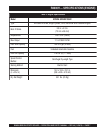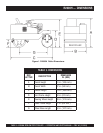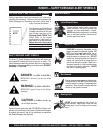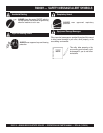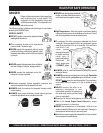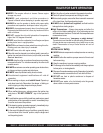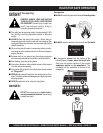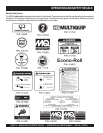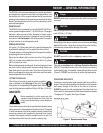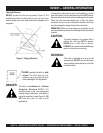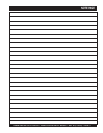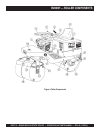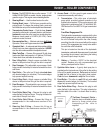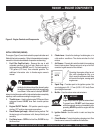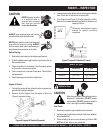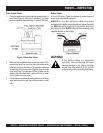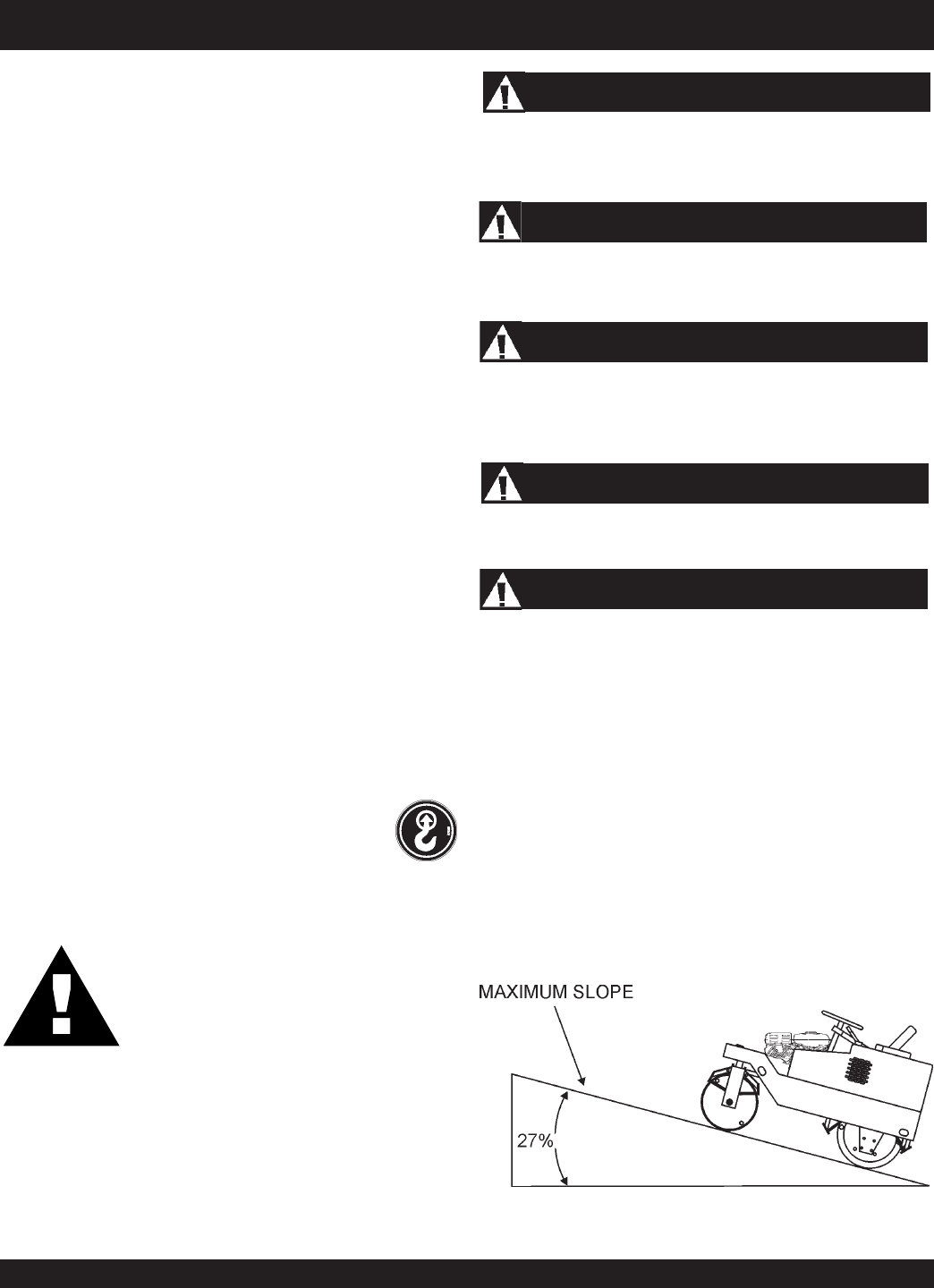
R2000H RIDE-ON STATIC ROLLER — OPERATION AND PARTS MANUAL — REV. #6 (11/29/10) — PAGE 15
R2000H — GENERAL INFORMATION
The forward-reverse control lever operates the hydrostatic pump
which governs the roller speed and direction of travel. The speed
in which movement of this lever is made is directly related to the
amount of pressure that is applied to the travel lever in each
direction. Travel speed is infinitely variable from 0 to 4 mph. The
neutral position of this lever will cause the roller to stop.
The R2000H roller has been designed for asphalt application
and compaction of granular soils used in site preparation. Use
the machine only for the purpose intended and by experienced
personnel who understand this operating manual and all safety
decals. Typical applications for this roller are driveways, patch
work and road repairs.
POWER PLANT
The R2000H roller is powered by a Honda GX240K1QAE2, air-
cooled, gasoline engine rated at 7.1 hp @3,600 rpm. The engine
features a side-mounted muffler designed to direct engine
exhaust away from the operator. In the event of low oil, this engine
has a built in "
oil alert system
" that will shut down if the engine
oil level reaches an unsafe operating level.
SPRINKLER SYSTEM
A 21 gallon (79.5 liters) water tank with a gravity feed spray bar
is provided for wetting the roll for asphalt pavement rolling.
The water system is fully adjustable from the operator’s position
by adjusting the valve in the floor.
Water can be added to the front and rear rollers. Thirty gallons
(250 lbs.) of water can be added to the front rollers, 51 gallons
(427 lbs.) to the rear roller.
Before starting an asphalt rolling job, be sure all spray bar holes
are clear of dirt or foreign matter and are working. Always use
clean fresh water in the water tank. To prevent rust and foreign
debris from clogging the spray bar holes, drain and flush water
tank and spray bars every 30 days.
LIFTING THE ROLLER
When lifting of the roller is required, attach a suitable
hook or shackle to the
lifting eye
of the roller. These
lifting points (4) are marked by a lifting hook decal. Make
sure the lifting device is capable of lifting 4,000 lbs. (1,814 Kg.).
DANGER:
Before operating the roller, make sure that
personnel and obstacles are free from the
roller’s path. Serious injury or even death can
result!
OPERATING ON SLOPES
Special care must be taken when operating the roller on hills or
slopes. There exist the possibility of serious injury to the operator
and severe damage to the roller in the event of a roll over.
ALWAYS operate the roller up and down hills rather than from
side to side. For safe operation hillside slopes should not exceed
15 degrees (27 % grade). See Figure 2 below.
Figure 2. Recommended Slope
NEVER! stand under, or get onto the roller while it is being lifted
or moved.
ONLY! use approved certified lifting devices capable of lifting at
least 4,000 lbs. (1,814 Kg.).
When lifting of the roller is required, only use the provided
lifting
eyes
to lift the roller. Using other sections of the roller for lifting
purposes may cause severe damage to the roller.
Danger
CAUTION
CAUTION
Danger
This roller is
not offered
with a
Rollover Protection Structure
(ROPS). The possibility exists of the roller tipping over causing
severe bodily harm , even death, if side-side operation is used
(Figure 3). DO NOT use this roller for side to side applications.
DO NOT operate this roller on
slippery
or
wet
surfaces.
CAUTION



